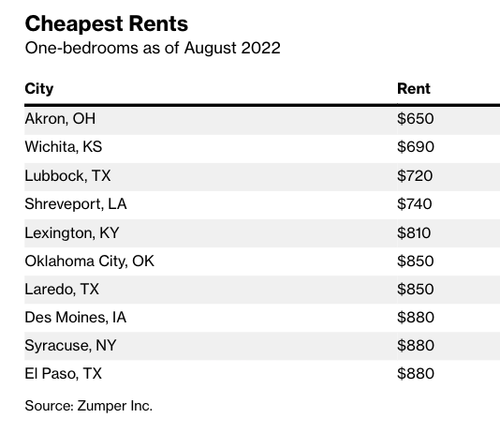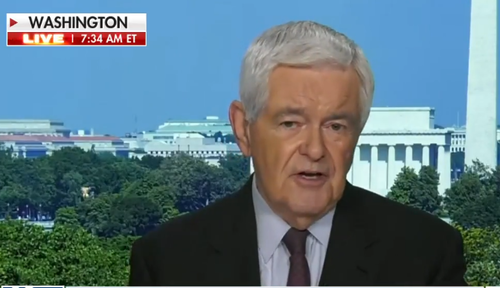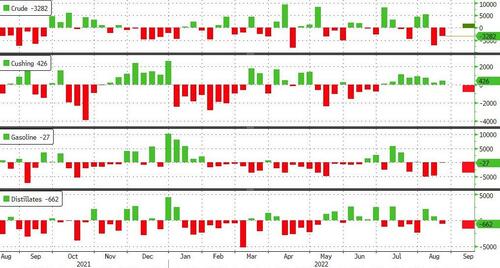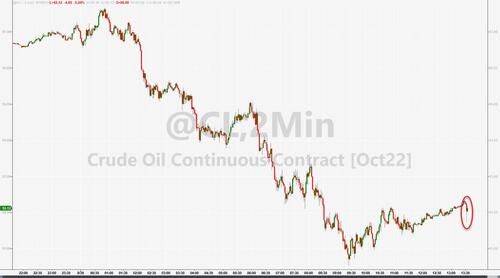Authored by Thomas Fazi via UnHerd.com,
For more than a year after the onset of the pandemic, talking about the possibility that the virus might have been lab-engineered was taboo. Then, as the evidence continued to mount, it suddenly became acceptable to talk about it in “respectable” circles. Today, however, we appear to have gone full-circle: a determined effort is once again underway to dismiss the lab-leak theory for good — even though no new evidence has emerged to disprove it.

Considering the endless ways in which the pandemic and our response to it have changed the lives of every human being on the planet, it’s astonishing to consider how little is actually known about the origins of the virus. Two and half years on, we are still very much in the dark as to when, how and even where SARS-CoV-2 first made its appearance.
This isn’t because our efforts to get to the bottom of the mystery have proved fruitless, but rather because those efforts have been systematically thwarted by the world’s two most powerful governments: America and China. This is the mother of all Covid conspiracy theories — but it’s also true.
One of the main “conspiracy theorists” is none other than Jeffrey Sachs, director of the Center for Sustainable Development at Columbia University, president of the UN Sustainable Development Solutions Network and chair of the Lancet Covid-19 Commission. He is not your typical tinfoil-hat-wearing internet crank. Sachs recently co-authored a paper in the Proceedings of the National Academy of Sciences calling for an independent inquiry into the virus’s origins. He believes there is clear proof that the National Institutes of Health (NIH), the primary US public health agency, and many members of the scientific community have been impeding a serious investigation into the origins of Covid-19 in order to cover up evidence that US-funded research in Wuhan may have played a role in the creation of the SARS-CoV-2 virus.
Many are convinced that the debate is settled, largely because almost immediately a public narrative surrounding the origin of the virus emerged. This held that the virus was zoonotic in nature, meaning that it had jumped from one or more animals (probably, it was argued, bats) to one or more humans, possibly through one or more unidentified animal intermediate hosts, and most likely at the Huanan Seafood Market — even though there was no conclusive evidence of any of this.
Early in the pandemic, an alternative theory emerged, suggesting that the Wuhan Institute of Virology (WIV) — known, of all things, for its research into SARS-related coronaviruses, and only eight miles from the Huanan Seafood Market — might have had something to do with an accidental outbreak. From a purely circumstantial standpoint, and considering the long history of safety breaches previously recorded at various facilities in China and throughout the world, one could have been justified for considering it, at the very least, a lead worth pursuing.
As Sir Jeremy Farrar, director of the Wellcome Trust, Europe’s biggest philanthropic research funding body, notes in his bestselling book Spike: “It was odd for a spillover event, from animals to humans, to take off in people so immediately and spectacularly in a city with a biolab … which is home to an almost unrivalled collection of bat viruses” — especially with a new virus that “seemed almost designed to infect human cells”. If this were a coincidence, he adds, it would be a “huge” one.
Yet from the beginning the very notion that the virus might have a laboratory-based origin was stifled. The hot denials came not only from the Chinese authorities and the Wuhan Institute of Virology itself, but also from the WHO and leading Western scientists, institutions and media organisations. For around a year and a half, the “lab-leak” hypothesis was ridiculed and dismissed as a fringe conspiracy theory and anyone who raised it deemed a crackpot — and even subject to censorship on Twitter and Facebook.
The mood seemed to shift when, beginning in mid-2021, several high-profile Western scientists, intelligence officials and politicians — including President Joe Biden — started to acknowledge the plausibility of a laboratory accident. Almost overnight, the lab-leak scenario went from being a “crackpot theory” to a credible and legitimate hypothesis. On the same day Biden announced that his administration would be investigating the origins of Covid-19, “including whether it emerged from human contact with an infected animal or from a laboratory accident”, Facebook stated that it would “no longer remove the claim that Covid-19 is man-made or manufactured” from its apps.
More than a year later, there is simply no conclusive evidence of whether the virus is zoonotic or artificial in nature — even though the public narrative continues to be heavily skewed towards the natural origin theory. What we do know, however, is that a massive cover-up was orchestrated from the earliest days of the pandemic by leading members of the scientific establishment and the Chinese authorities.
This incredible story sheds light on several key aspects of the entire pandemic management, something that Toby Green and I go into in detail in our forthcoming book: the stifling of critical opinion, the lack of transparency by public institutions, the deeply unscientific manner in which the “scientific consensus” about many aspects of the pandemic came about, and how some of the leading actors of the pandemic tragedy — the WHO, Anthony Fauci, the NIH, leading scientific journals — were already engaging in the publication of papers which traduced the scientific method from the very first days of the pandemic.
Here’s a brief recap of what we know about the cover-up — much of which we are aware of thanks to a series of Freedom of Information Act (FoIA) requests.
Much of the work on SARS-like CoVs performed in Wuhan was part of an active and highly collaborative US-China scientific research programme funded by the US government — primarily through the National Institute of Allergy and Infectious Diseases (NIAID), directed by Anthony Fauci, which is part of the NIH — and coordinated by the US-based non-governmental organisation EcoHealth Alliance (EHA). The group’s research work went beyond the simple analysis of existing coronaviruses, and actually involved the engineering of “chimeric” bat coronaviruses, some of which proved to be potentially more infectious to humans — a highly risky technique known as gain-of-function.
In 2018, EcoHealth and the WIV (in collaboration with other institutions) sent a grant proposal to the Defense Advanced Research Projects Agency (DARPA), which included a plan to insert furin cleavage sites into existing bat coronaviruses — spots in the surface protein of a virus that can boost its entry into human cells. The DARPA proposal was rejected — and yet the presence of a furin cleavage site is precisely what sets SARS-CoV-2 apart from all known SARS-like coronaviruses. Did the researchers carry out the research anyway, possibly using other sources of funding? Nobel Prize-winning virologist David Baltimore stated that he considered this to be “the smoking gun for the origin of the virus”.
In light of all this, it’s hardly surprising that in the early days of the pandemic, at the highest levels of the US establishment, the question of whether the virus might have been engineered at the WIV, possibly through research part-funded by the US government, was taken very seriously. As a result of an FoIA request, we know that on February 1, 2020, Anthony Fauci convened a “totally confidential” conference call with at least a dozen high-level experts from around the world, many of whom privately admitted that there was a very high probability that the virus had been artificially engineered and had then “escaped” from the Wuhan lab.
Yet not only did the NIH fail to disclose this to the public or to Congress, but the emails released under the FoIA suggest that it took an early and active role in promoting the “zoonotic hypothesis” and the rejection of the laboratory-associated hypothesis. Indeed, within days of the February 1 call, a group of virologists, including some who were on it and had endorsed the “artificial origin” theory, prepared the first draft of a hugely influential paper on The proximal origin of SARS-CoV-2 — subsequently published in Nature — that argued for the exact opposite.
Moreover, the NIH has resisted the release of important evidence, such as the grant proposals and project reports of EHA, and has continued to redact materials released under FoIA, including a remarkable 290-page redaction in a recent release. Even more incredibly, at some point after March 2020 a number of early SARS-CoV-2 genomic sequences were deleted from the NIH’s own archive at the request of researchers in Wuhan.
The strangeness doesn’t end here. In February 2020, an influential letter signed by 27 global experts was published in The Lancet, strongly condemning “conspiracy theories suggesting that Covid-19 does not have a natural origin”. The letter proved crucial, alongside the aforementioned Nature paper, in nipping in the bud the lab-leak hypothesis and giving the illusion of scientific consensus. In late 2020, however, emails released following a FoIA request showed that the Lancet statement had been orchestrated by one of the 27 co-authors — none other than Peter Daszak, president of EcoHealth Alliance. It was also revealed that all but one of the other 26 scientists were linked to the Wuhan lab, their colleagues or funders.
Daszak was first appointed in late 2020 as chair of the task force created by the Lancet Covid-19 Commission with the aim of establishing none other than “the origins of Covid-19”; and shortly thereafter as the only US representative to a WHO fact-finding mission to China tasked with the same goal. Unsurprisingly, both task forces found that the virus was most likely zoonotic (i.e., natural) in origin, and that transmission through a laboratory incident was extremely unlikely.
The WHO report, in particular, came under heavy criticism, leading to the establishment of a specific work group tasked with ascertaining the origins of SARS-CoV-2, the Scientific Advisory Group on the Origins of Novel Pathogens, which published its first preliminary report in June 2022. The results were inconclusive, largely because “key pieces of data” from China were missing, leading the WHO to recommend in its strongest terms yet that a deeper probe was required into whether a lab accident may be to blame. As we have seen, however, it’s not only the Chinese government that is covering up its tracks about its possible involvement in the engineering of SARS-CoV-2 — but the American one as well.
A new campaign is now underway to put the lab-leak theory to rest once and for all. The recent publication of two new studies providing more evidence that SARS-CoV-2 emerged into humans via the live animal trade at the Huanan Seafood Market has led several outlets to emphatically claim that “the Covid lab leak theory is dead”, once again misleading citizens into thinking that the debate is now really settled.
But the studies don’t provide any evidence that the virus didn’t escape from the Wuhan lab — they simply argue that it’s not a plausible scenario, also based on the fact that there’s no evidence that the virus was present at the WIV before the pandemic started. But of course absence of evidence is not evidence of absence. As Sachs notes, “this [claim] is only as good as the limited data on which it is based, and verification of this claim is dependent on gaining access to any other unpublished viral sequences that are deposited in relevant US and Chinese databases”.
Ultimately, the virus may indeed be conclusively proven to be natural in origin. But in order to do that, as Sachs stresses, a real independent scientific investigation is needed. The public deserves to be shown incontrovertible proof that the Wuhan lab has nothing to do with all this — but that means that the US and Chinese governments have to open up their lab records instead of going out of their way to prevent a real investigation. Amid a time of heightened geopolitical tensions and crumbling faith in political leadership across the West, transparency is needed more than ever.
If we can’t get this one right, how else can we be expected to place our faith in authorities ever again?
* * *
Like what you’re reading? Get the free UnHerd daily email. Sign up, for free...


























